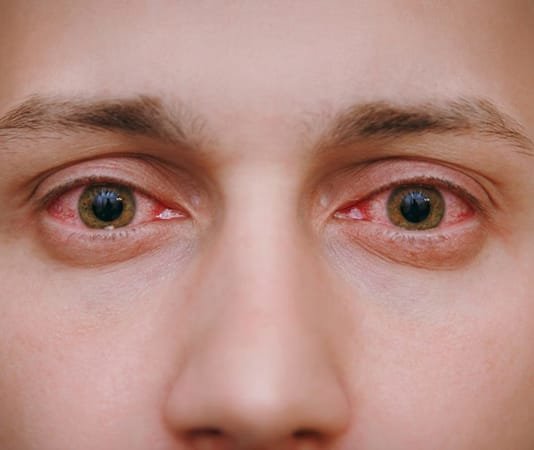
Have you ever woken up in the morning and noticed that the white part of your eye (sclera) is red? Your eyes may be watery or itchy at times, or you might notice that there is some thick yellow discharge from your eye. If this describes your condition, then you probably have pink eye (conjunctivitis).
Conjunctivitis is a prevalent disease in children and adults that has caused many people to seek treatment at our Urgent Care Clinic in Richmond and Katy, TX.
Without further ado, let’s peer a bit deeper into what conjunctivitis is about.
Pink Eye (Conjunctivitis), in a Nutshell
The white hard part of your eye (sclera) and the eyelids’ inner surface are covered by a thin clear membrane known as the conjunctiva. In some scenarios, the tiny blood vessels within the conjunctiva get inflamed. If this happens, the vessels become more visible, making the white part of your eye appear reddish-pink.
In simple words, an infection or inflammation of the conjunctiva is known as conjunctivitis or, in common parlance, pink eye.
Pink eye can be a very irritating infection, but rarely does it affect your vision. However, there are various treatments available in our Urgent care clinic near you. Pink eye is notoriously contagious, especially among children who are in school or daycare. Early diagnosis and treatment at our emergency care can help curb the spread of the infection.
What Causes Pink Eye?
Technically there are three main types of conjunctivitis, and the cause will vary depending on the type. These are:
Allergic Conjunctivitis
- Allergic conjunctivitis is more prevalent in people who have seasonal allergies. They get this infection by coming in contact with an allergen that causes an allergic reaction in your eyes.
- Giant papillary conjunctivitis is caused by the continual presence of a foreign body like a contact lens in the eye.
Infectious Conjunctivitis
- Viral conjunctivitis is commonly caused by viruses associated with the common cold like the rhinovirus and coronavirus.
- Bacterial conjunctivitis is mostly caused by streptococcal or staphylococcal bacteria present in your own skin or respiratory system.
- Ophthalmia neonatorum is a severe type of bacterial conjunctivitis that affects neonates or newborn babies. This is so severe that it can lead to permanent eye damage if it is not treated immediately. This infection occurs when the child is exposed to gonorrhea or chlamydia during delivery.
Chemical Conjunctivitis
You will get this type of infection if you are exposed to irritants such as chlorine in swimming pools, air pollution, and exposure to noxious chemicals.
The symptoms that you exhibit are dependent on the cause of the inflammation. However, common symptoms may include:
- More tears than usual
- Redness in the white part of the eye (sclera)
- Blurred vision
- Itchy eyes
- Light sensitivity
- Burning eyes
- Swollen lymph nodes
- White or green discharge from your eye
- Thick yellow discharge that crusts over your eyelashes, especially when you are asleep.
- Swollen conjunctiva
Is Pink Eye Contagious?
Conjunctivitis that is caused by bacteria or viruses can easily spread from person to person. You can spread pink eye caused by bacteria while you have symptoms about 48 hours after starting treatment.
If a virus causes pink eye, you will spread the infection even before developing the symptoms and as long as you exhibit the symptoms. This can be for several days.
However, if the cause of inflammation is due to an allergen, then it is not contagious.
What’s the Treatment for Pink Eye?
The treatment that you will receive is dependent on the cause of the infection.
- Bacteria. When you get to our 24-hour emergency clinic near you, our doctor will prescribe antibiotics in the form of ointments, eye drops, or pills. The infection should improve after a week or so.
- Viruses. Since this type of pink eye results from the viruses that cause the common cold, you just have to let it run its course. This typically lasts from four to seven days. Antibiotics will not work on viruses.
- Allergies. Your eye should get better after the allergy is treated. Antihistamines can help alleviate the symptoms.
- Irritants. If an irritating substance causes the inflammation, wash your eye immediately with water for five minutes, your condition should improve within four hours.
We Are Here for You
Do not hesitate to call our doctor if you have severe pain in your eye or if your eyes are stuck together in the morning, or if you have a high fever. You can also come to our urgent care clinic in Richmond and Katy, TX if your symptoms aren’t improving after two weeks. At Preferred Urgent Care, we are ready to help you get better.
